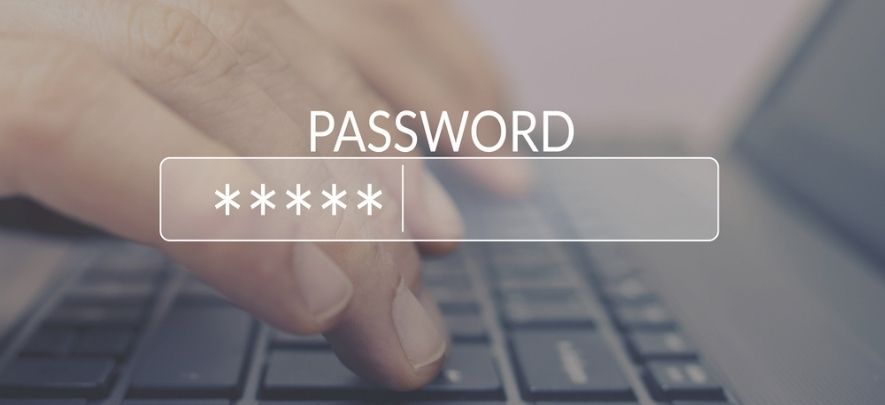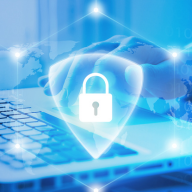A 5-step strategy to create strong, easy-to-remember passwords

Digital & Technology
232 week ago — 6 min read
Did you know that the first Thursday in May is commemorated as World Password Day?
The Digital Age – and along with it, the Information Age – is well and truly here. So unless you live under a rock (or on top of a glacier in Antarctica), you probably use a digital device on a regular basis. You probably also access the Internet on these devices to look for information, to communicate with others, to do your work and even for entertainment. For the most part, these are glad tidings as long as we don’t forget one critical aspect of living in the Digital Age – cybersecurity.
Every time you use an Internet-enable device, you are vulnerable to data loss, ransomware attacks, an attack on your personal or professional reputation, and even identity theft. That’s why it’s crucial to keep ourselves and our devices safe from unscrupulous criminals and cyber hackers by following certain cyber safety practices. And passwords, specifically the use of strong passwords are a big part of this.
Most people find it painful to create strong passwords that protect them (and their devices) and are also easy to remember. That’s why millions of user accounts worldwide are still secured with ‘123456’ or ‘password’, giving rise to cybersecurity incidents that could have been prevented with some effort and some common sense.
Don’t be a victim of your own carelessness, laziness or ignorance. Secure your devices with strong, unique passwords that are also easy to remember. Try this easy 5-step strategy!
Step 1: Think of a word that is meaningful to you
As an example, let’s choose the word intelligence.
A word of caution – the word should be meaningful but not common or easily guessable by others. So avoid using your name or surname, your family members’ names or surnames, birth dates, anniversaries, your building name, etc.
Step 2: Add case sensitivity
Mix and match upper case and lower case letters in your chosen word. Try to identify a rule that will make sense to you now and also be easy to remember later.
For instance, you can make every 3rd letter in your word upper case: InTelLigEnCE
Step 3: Add numbers
Like case sensitivity, insert numbers somewhere in the word. Try to add a number that’s personally meaningful to you like your age or your child’s age. If you add it in the centre of the word, it will be easier to remember: InTelL09igEnCE
Step 4: Add symbols and punctuations
Almost every software application or website worth its salt will ask you to create passwords that include ‘special characters’. Here’s how to make them work for you!
After adding capitals and numbers to your chosen password, add a symbol or punctuation mark at the beginning or end. You can always add them somewhere within the word, but it’s easier to remember a password that starts or ends with a special character.
Our example password could now be: InTelL09igEnCE@ or #InTelL09igEnCE
Step 5: Add a word from another language
Cybercriminals often use a ‘dictionary attack’ to guess’ passwords and undermine user accounts. A good way to prevent this issue is to add a word from another language into your password. You don’t have to know another language. Simply choose a word from it and add it to the beginning or end of your chosen password. Make sure it’s easy to remember.
We chose the word ‘aavjo’ from Gujarati so our password is now InTelL09igEnCE@aavjo.
You can apply the above steps to this new word as well: InTelL09igEnCE@Aav1jO
However, this may make your password unnecessarily complicated and therefore more difficult to remember. However, the choice is yours.
Also read: Threat of cyber-attacks: Is your business secure?
Now you have a password that’s long enough, contains a unique mix of characters, numbers and symbols, and is personally meaningful to you. Follow this process and you will be able to create passwords that are easy for you to remember. You can always use a password checker software to check its strength and make modifications if necessary.
Some more useful password tips:
- Never use the same password for all your accounts. Hack one, hack all!
- Never share your passwords with anyone (except your dog)
- Use a reliable software to keep track of your passwords instead of writing them down where they can be easily accessed by others
- Use two- or multi-factor authentication whenever possible
- Avoid using public Wi-Fi, especially to access websites where you need to insert a password (e.g. your bank’s website). Use a VPN to prevent password interception
- Never click on ‘save password’ on public computers or a computer that’s not your own
- When logging into financial accounts, use the on-screen keyboard to insert your password instead of the actual keyboard. This prevents malware from stealing your login credentials
Also read: Does your company have a great security culture? Review these 6 crucial indicators
To explore business opportunities, link with me by clicking on the 'Connect' button on my eBiz Card.
Image source: shutterstock.com
Disclaimer: The views and opinions expressed in this article are those of the author and do not necessarily reflect the views, official policy or position of GlobalLinker
Posted by
Lion Amir ViraniTech Evangelist| Thought Leader | Social Entrepreneur | Enthusiastic Networker | Speaker| Startup Mentor
Network with SMEs mentioned in this article
View Lion Amir 's profile
Most read this week













Comments (1)
Share this content
Please login or Register to join the discussion